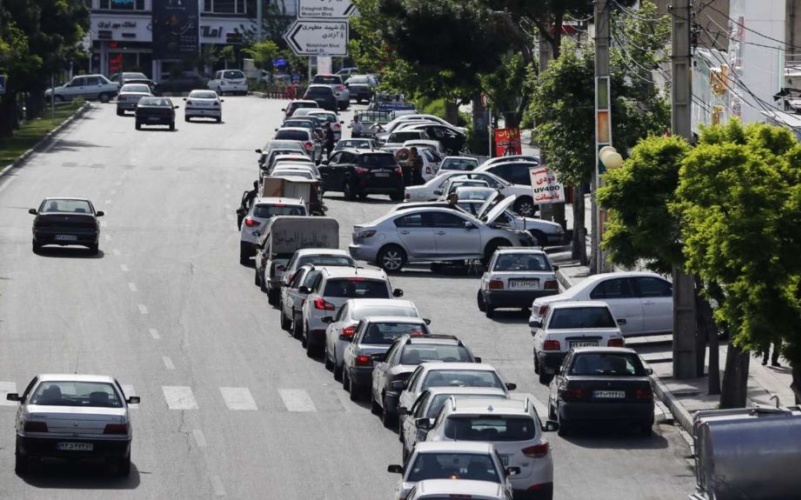Iranians queue for petrol after report that heavily-subsidized gasoline will be rationed, May 1, 2019
Facing US sanctions and a sharp fall in oil income, the Iran Government has begun rationing of heavily-subsidized gasoline, with motorists having to use smart cards for limited purchases.
The National Iranian Oil Product Distribution Company said on Monday that the system will begin in the capital Tehran and the cities of Karaj, Tabriz, and Esfahan.
The “fuel card” was introduced in 2007, when the Ahmadinejad Government hoped to cut spending on fuel subsidies and divert the funds to infrastructure programs.
Motorists could buy up to 60 liters of heavily-subsidized gasoline each month that they could buy at a heavily subsidized price at gas stations. The system was never implemented widely.
At the start of May, reports spread of the reintroduction of the smart card, with the ration of 60 liters per month for each driver and less-subsidized gasoline at a price three times higher. Long queues soon formed outside petrol stations to fill up before the system was implemented.
Oil Minister Bijan Zanganeh said the reports were incorrect, and an Interior Ministry official told Iranians to follow only “official” news.
Iran Daily, May 2: Queues Amid Reports of Petrol Rationing
The Government’s official explanation for the smart-card system is that it is needed to combat smuggling of fuel to neighboring countries, where prices are up to five times higher than even less-subsidized gasoline in Iran.
Estimates suggest Iran, now a gasoline-exporting country, is consuming more than 100 million liters of the fuel each day.
The NIOPDC did not say if rationing was being considered of less-subsidized gasoline in Iran’s two-price system.
Amid comprehensive US sanctions, Iran is trying to cope with a sharp reduction of oil sales. According to shipping and tanker information, Iranian exports this summer are as low as 100,000 barrels per day and no more than 400,000 bpd — up to 96% below the April 2018 level.


“Government Begins Rationing of Subsidized Gasoline”
No worries, you have 370kg of enriched uranium.